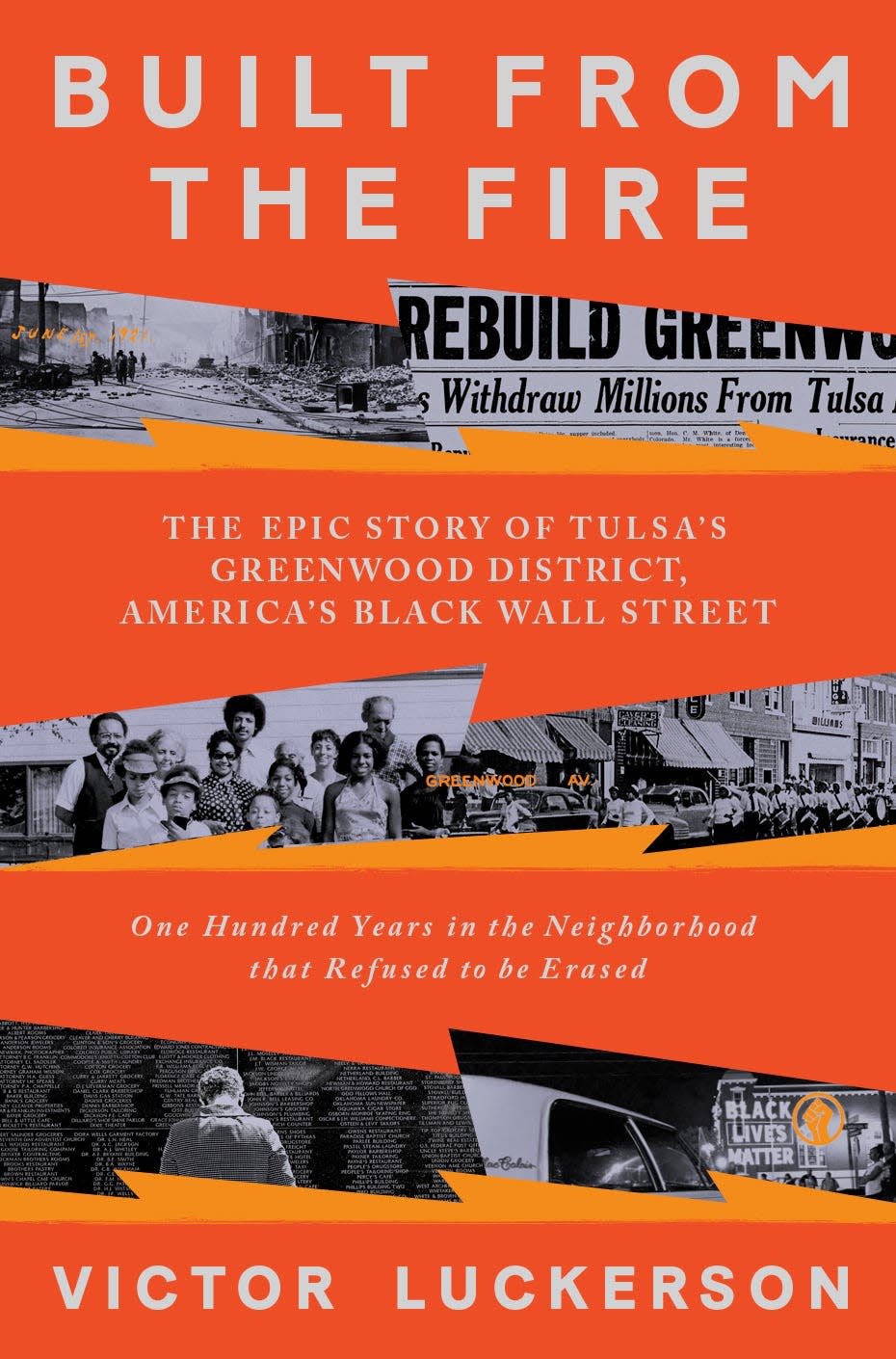Author Victor Luckerson mines the aftermath of Tulsa Race Massacre in "Built From the Fire"
Journalist and author Victor Luckerson does not recall any specific instance when the history of Tulsa, Oklahoma, and its famous Greenwood district entered his consciousness. He likened his awareness of it to osmosis, absorbed from the seldom shared but palpable experiences of being Black in America rather than from his formal education.
Then, in May 2018, The Ringer (an online publication) sent Luckerson, a staff writer at the time, to report on the infamous Greenwood District and its Black Wall Street. At the time, he had a grandiose vision of the town that overcame so much, especially given the tragedy of the 1921 Tulsa Massacre that nearly eradicated the black community that called (and still calls) the Greenwood District home. The anniversary vigil disavowed him of that vision. About 30 people attended while, across the street, hundreds of spectators streamed toward ONEOK Field to cheer on Tulsa’s minor league baseball team, The Drillers. “Even the people who lived there didn’t seem to be interacting with their history.”

By August 2018, Luckerson began committing two hours each morning to researching Greenwood while he still lived in Atlanta. He eventually moved to Tulsa and reported for The Oklahoma Eagle and pieced together what would ultimately become Built from the Fire: The Epic Story of Tulsa's Greenwood District, America's Black Wall Street (Penguin Random House May 2023).
SMN: What was your journey to publication with Penguin Random House like?
Luckerson: I had always dreamed of writing a book by the time I turned 30. As a journalist, a few agents expressed interest in my articles. Eventually, I signed with one and they suggested that the Tulsa story could be a book project. By 28, I had started on the proposal with my agent, which took nine months to draft. We sent it off to Penguin and they accepted it.
SMN: Why is Greenwood’s story important now?
Luckerson: I remember being one of three Black guys at my high school in Atlanta sitting at a lunch table around the time 12 Years a Slave came out. One of my friends mentioned he was tired of seeing abuse of Black people in movies and media. Another brought up Black Wall Street and asked if we had heard about it. We had, but nothing too concrete back then. That moment exemplifies my desire to share stories of Black success with other Black people so we can move beyond the trauma. Also, to truly understand the depth of the atrocities you need the broader context of how Black people actually lived outside the threat of White violence.
SMN: Why do you think many Americans, even Black Americans, only just became aware of Greenwood through its recent appearances in The Watchmen and Lovecraft Country?
Luckerson: My parents, who were born in the 1950s, didn’t want to burden their children with their trauma, even what they perceived as “small” injustices. I think that’s common of many parents, though I do think that inclination has recently shifted thanks to more resources and diversity in media. For my part, I hired my cousin (who was 13 at the time) as a research assistant. He had never heard of Greenwood before he read my book proposal. I just interviewed him three months ago and he said that the stories of the generations that overcome so much, time and again, inspired and empowered him to address the issues of today. He just accepted an offer to attend Princeton in the fall!
SMN: How many families did you interview from Greenwood?
Luckerson: I worked closely with four families and framed the main narrative arc around the Goodwins, in particular Ed. His parents had come to Greenwood in search of better opportunities as had most Black families in the early 1900s. I tried to humanize historical figures as best I could and highlight how they impacted the legacy of the community.
Dual Threats: Historic preservationists face new challenges as sea-level rise threatens Butler Island
Land Fight: First Bryan Baptist Church puts Housing Authority on notice. We want our land back
SMN: How do you see your book impacting communities beyond Tulsa, in places like Savannah for instance?
Luckerson: The practice of redlining in the '30s negatively affected Black businesses. Greenwood was ultimately bisected by an interstate and largely destroyed. Both practices along with the threat of violence were not unique to Tulsa. I’m originally from Montgomery, Alabama, which also faced these issues. A government’s memory is longer than any individual’s is. Having done the research for my book, I now know the steps others can take to discover how damaging practices like urban renewal and others truly were for Black communities across the country.
SMN: What surprised you most along the journey of bringing this book into the world?
Luckerson: I came across something called the The Policy Game, which was essentially like today’s lottery. It was illegal until government entities came along and standardized it. I told my mom how members of the Goodwin family were involved the Policy Game and bootlegging. She then told me that my own grandfather was a bootlegger who bribed the police in our Alabama [community]. Our discussion helped me understand that even middle-class Black families had limited access to legitimate opportunities for growth.

SMN: What stories do you see yourself telling next?
Luckerson: I am always interested in stories that fill in the gaps in Black history, particularly between the Civil War and the Civil Rights Movement, where I feel Black people kind of disappeared from textbooks in my schooling.
If You Go >>
Author Talk: Victor Luckerson
When: 5-6 p.m., June 8
Where: Senior Citizens Inc., 3025 Bull St.
Info: $10, seniorcitizensinc.org
This article originally appeared on Savannah Morning News: Victor Luckerson's "Built From the Fire" mines Tulsa Race Massacre

